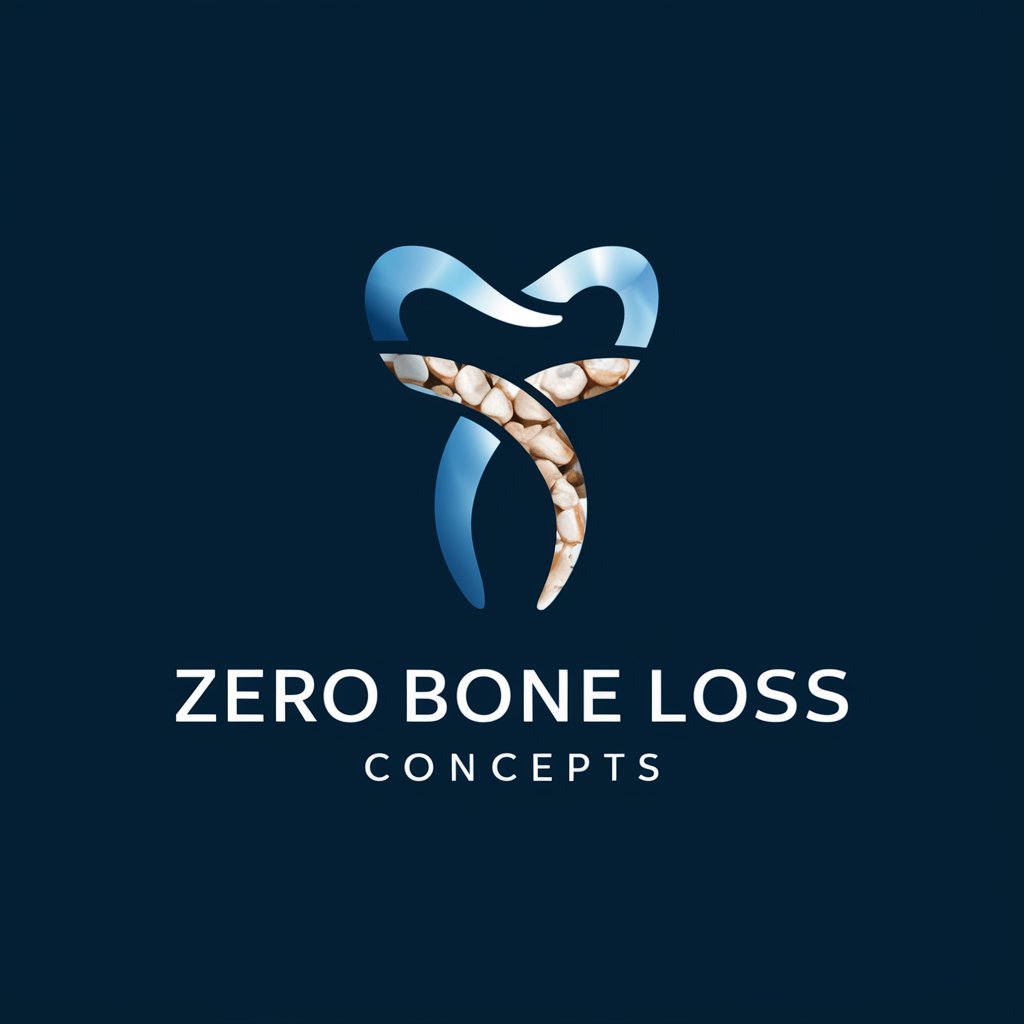Zero Bone Loss Concepts - Expert Implant Knowledge

Welcome to Zero Bone Loss Concepts, your guide to advanced implantology.
Ensuring Stable Bone Around Implants
Explain the importance of vertical soft tissue thickness in maintaining crestal bone stability.
Discuss the role of implant design factors in achieving zero bone loss.
What are the surgical techniques recommended for preventing bone loss around dental implants?
How does the use of different prosthetic materials influence crestal bone stability?
Get Embed Code
Introduction to Zero Bone Loss Concepts
Zero Bone Loss Concepts, as described by Tomas Linkevicius, encompasses protocols and techniques designed to prevent crestal bone loss around dental implants. This method integrates both surgical and prosthetic considerations to optimize implant longevity and stability. For instance, a successful case presented in the book shows a significant reduction in bone loss over a five-year period after treatment, illustrating the effectiveness of the approach. Powered by ChatGPT-4o。

Main Functions of Zero Bone Loss Concepts
Surgical Factors for Crestal Bone Stability
Example
Ensuring optimal implant placement depth and choosing appropriate implant design factors are crucial for maintaining bone stability at the crestal level.
Scenario
A dentist adjusts the placement depth of an implant considering both the biologic and mechanical aspects to ensure minimal stress on the crestal bone, which reduces the risk of bone resorption.
Prosthetic Factors for Maintaining Crestal Bone
Example
The selection of prosthetic materials and the design of the prosthetic components play significant roles in maintaining the integrity of crestal bone post-implantation.
Scenario
A prosthodontist chooses a specific abutment design that minimizes the micro-gap at the implant interface, thereby reducing the potential for bacterial infiltration and subsequent bone loss.
Vertical Soft Tissue Management
Example
Management of vertical soft tissue thickness is essential to protect the underlying bone and stabilize implant sites.
Scenario
During an implant procedure, a surgeon may perform soft tissue augmentation to increase the thickness of the mucosa, which can lead to improved bone stability around the implant.
Ideal Users of Zero Bone Loss Concepts
Implant Surgeons
Surgeons specializing in dental implants benefit from understanding and applying these concepts to enhance the success rates of implant surgeries and ensure long-term stability.
Prosthodontists
Prosthodontists utilize these concepts to design restorations that harmonize with surgical outcomes, focusing on maintaining crestal bone health and optimal aesthetic results.
Periodontists
Periodontists can apply the principles to manage soft tissue around implants effectively, which is crucial for the prevention of peri-implant diseases and for supporting crestal bone preservation.

Steps for Using Zero Bone Loss Concepts
Step 1
Visit yeschat.ai to explore Zero Bone Loss Concepts with a free trial, no login or ChatGPT Plus required.
Step 2
Familiarize yourself with the foundational principles by reviewing key surgical and prosthetic factors crucial for maintaining crestal bone stability around implants.
Step 3
Apply the concepts to clinical practice, focusing on implant placement depth, soft tissue management, and choosing appropriate implant-abutment connections to minimize bone loss.
Step 4
Continuously evaluate treatment outcomes using radiographic assessments to ensure long-term success and stability of implant treatments.
Step 5
Participate in ongoing education and training to stay updated with the latest research and techniques in implant dentistry related to Zero Bone Loss Concepts.
Try other advanced and practical GPTs
Weight Loss Coach
Shape Your Journey with AI

Weight Loss GPT
Your AI-Powered Weight Loss Partner

Recipes for Weight Loss
Your AI-Powered Diet Assistant

Gentle Weight Loss Coach
Sustainably manage weight with AI.

Weight Loss Mentor
Your AI-Powered Weight Loss Coach

Consumer Tech Journalist
Powering Technology Journalism with AI

Accounts - Profit and Loss
Simplify financial insights with AI.

Critical Race Theory Tutor
Harness AI for Smart Legal Learning

Race Data Wizard
Harness AI to Boost Racing Strategy

画像GPT
Empowering creativity with AI-driven visuals

Game - Lost Heir 大族孤儿
Unveil Your Legacy, Shape Your Story

Legal Paws
Empowering Animal Rights with AI

Detailed Q&A on Zero Bone Loss Concepts
What is the main goal of Zero Bone Loss Concepts?
The main goal of Zero Bone Loss Concepts is to achieve and maintain crestal bone stability around dental implants, minimizing bone loss through strategic surgical and prosthetic techniques.
How does implant placement depth affect bone loss?
Implant placement depth is critical; placing the implant too deep can lead to bone resorption up to the first thread or polished collar, whereas proper placement minimizes bone loss and enhances soft tissue integration.
What role does soft tissue thickness play in implant stability?
Adequate vertical soft tissue thickness serves as a critical buffer and protective layer for the underlying bone around implants, influencing the biological width and reducing the risk of peri-implant disease.
Why is the choice of implant-abutment connection important?
Choosing the right implant-abutment connection is essential because it affects the microgap and subsequent bacterial infiltration at the implant site, which can lead to inflammatory reactions and bone loss.
Can Zero Bone Loss Concepts be applied to any implant system?
While Zero Bone Loss Concepts are universally applicable, specific adaptations may be required depending on the implant system's design, particularly concerning the type of abutment and microgap characteristics.
